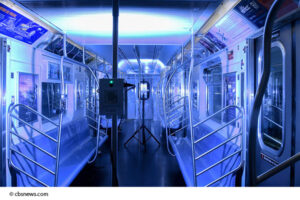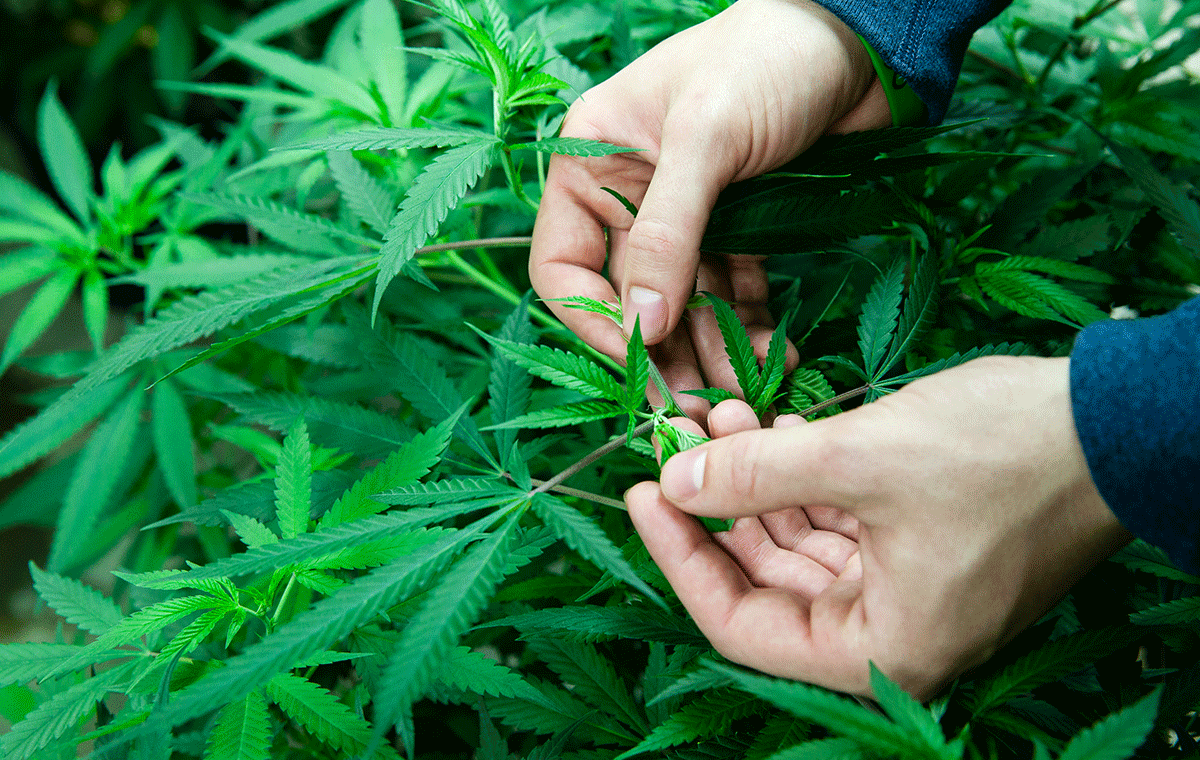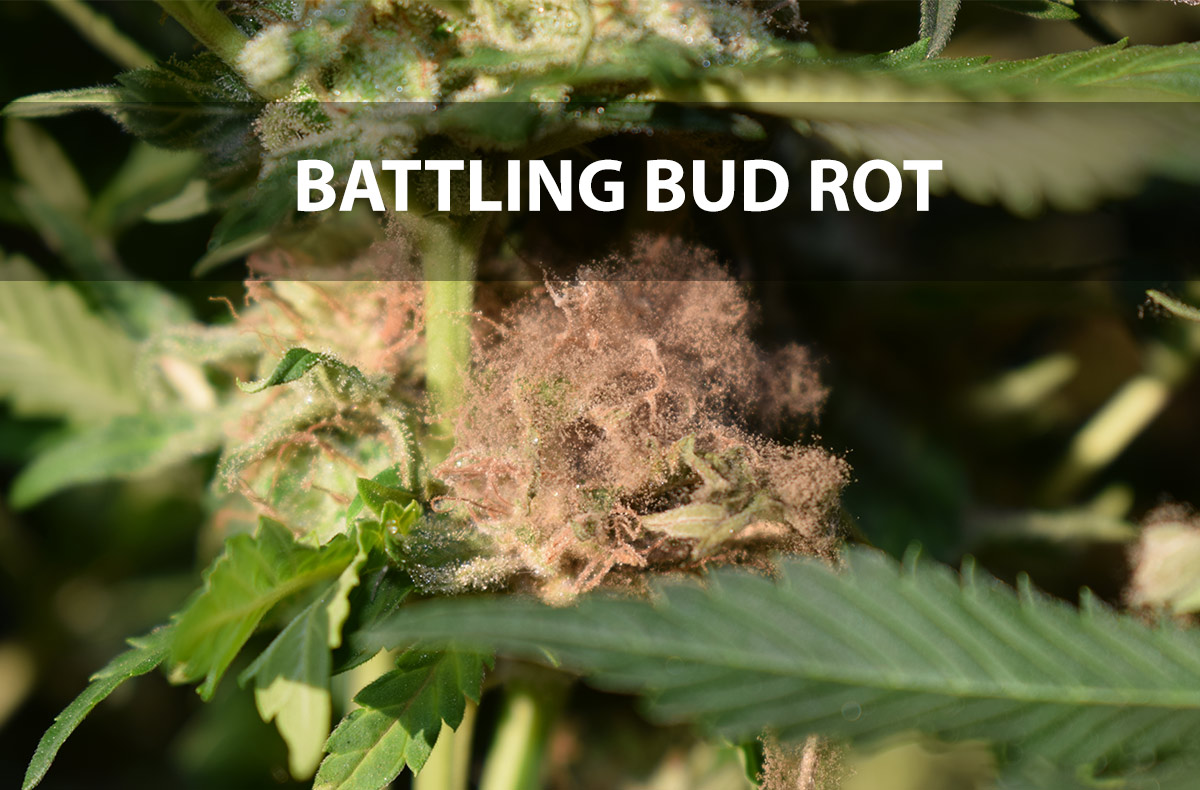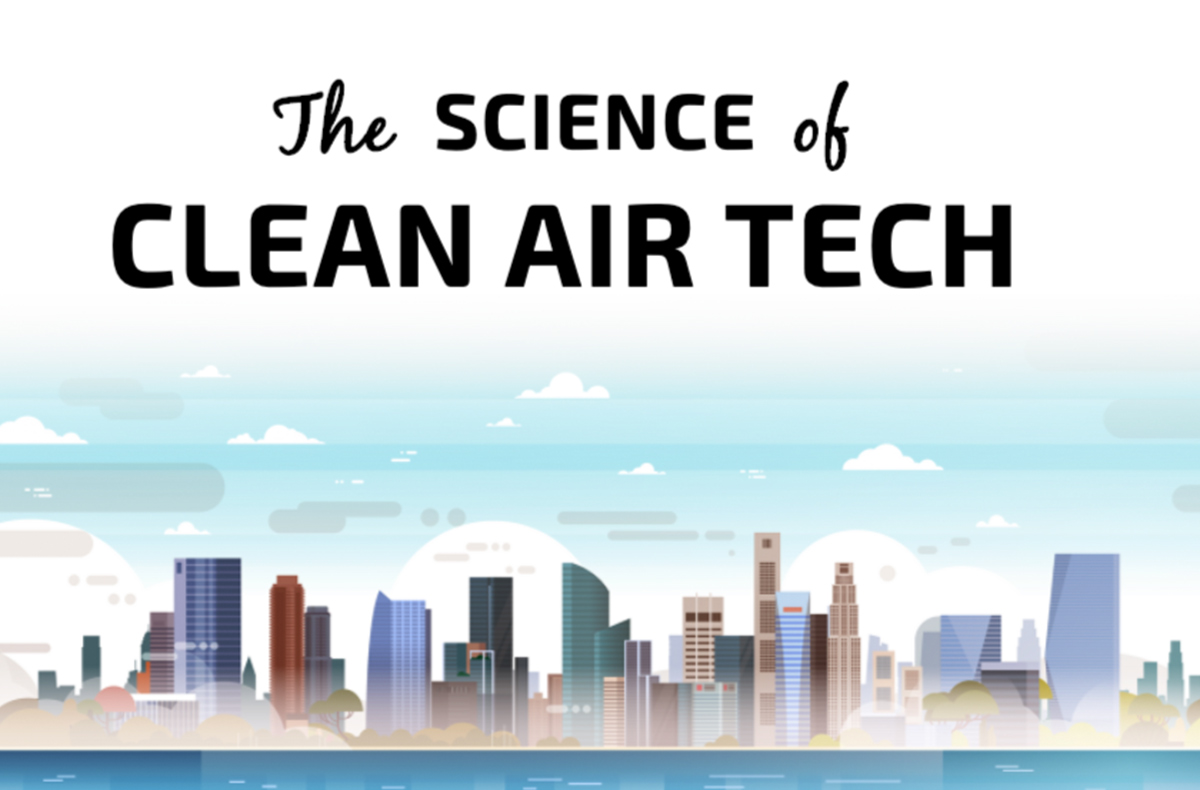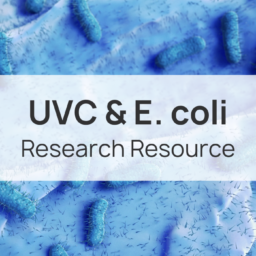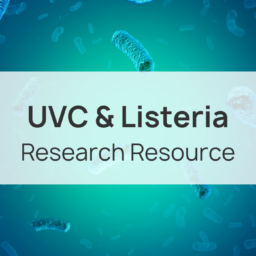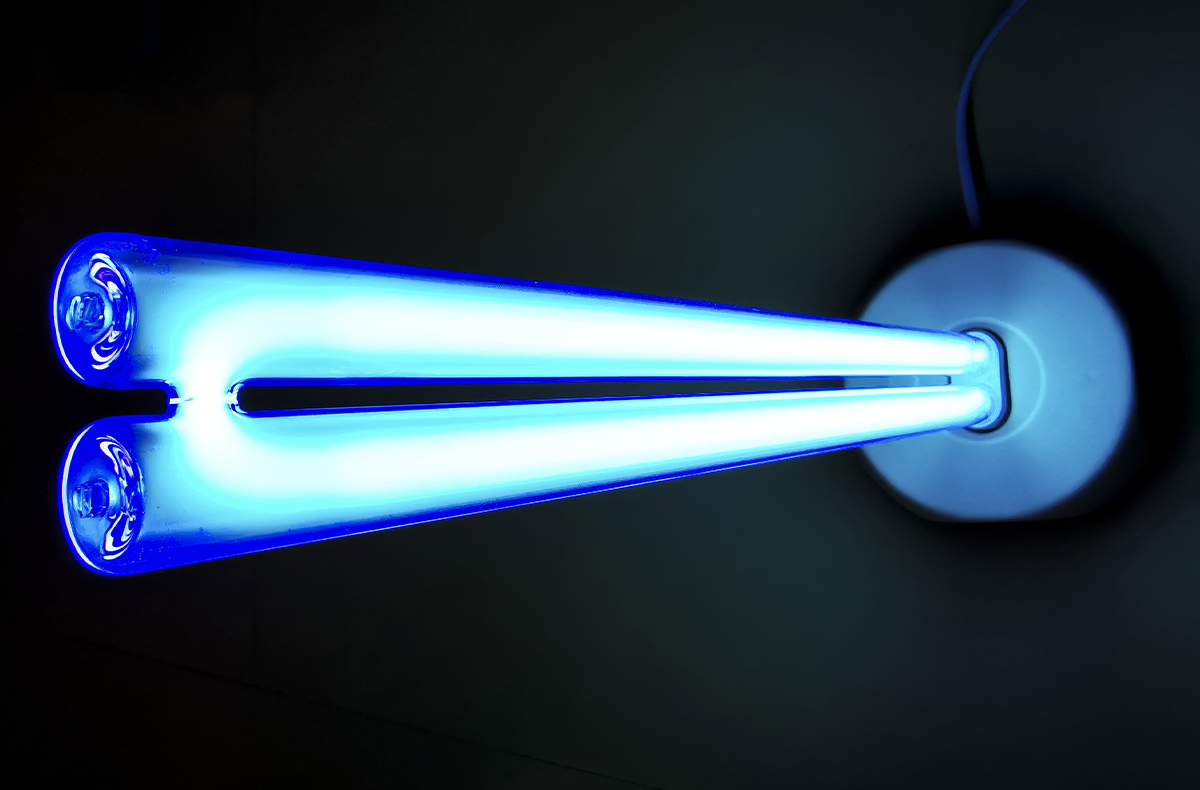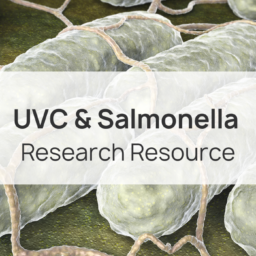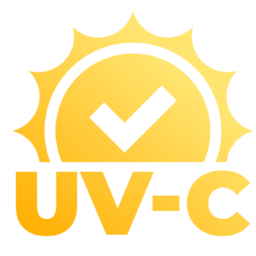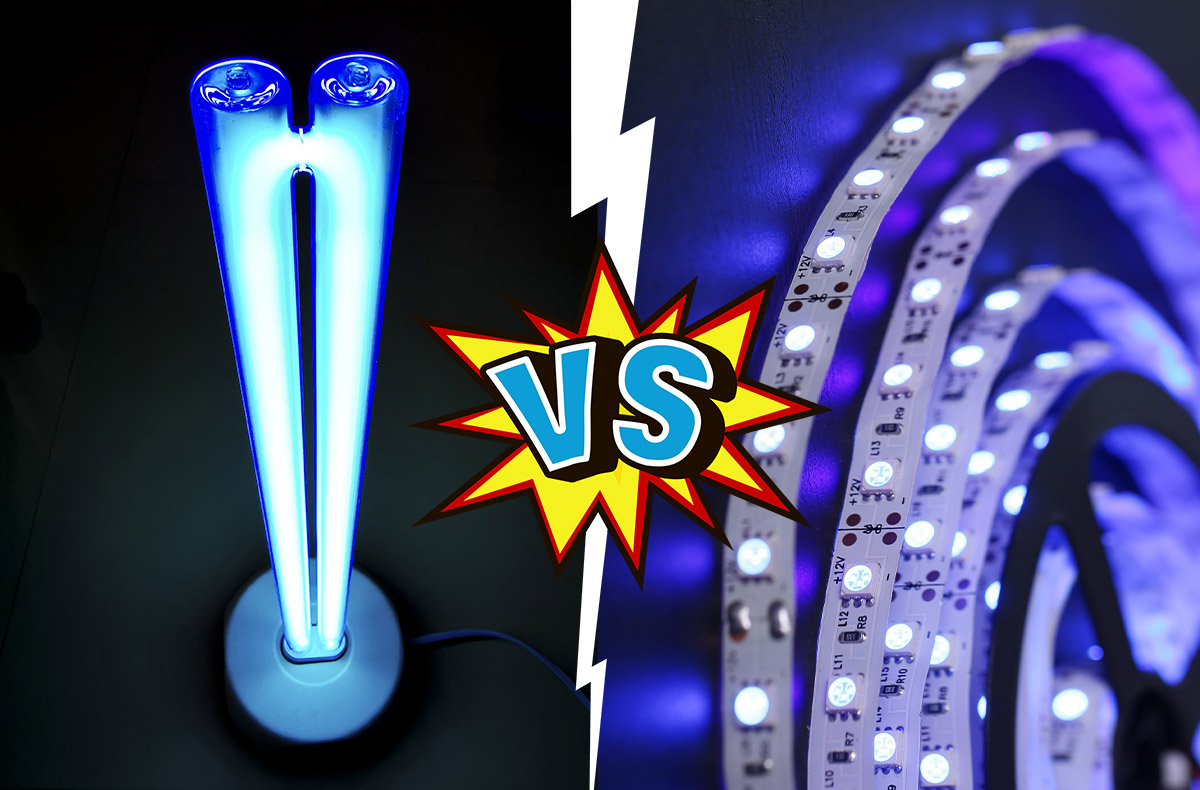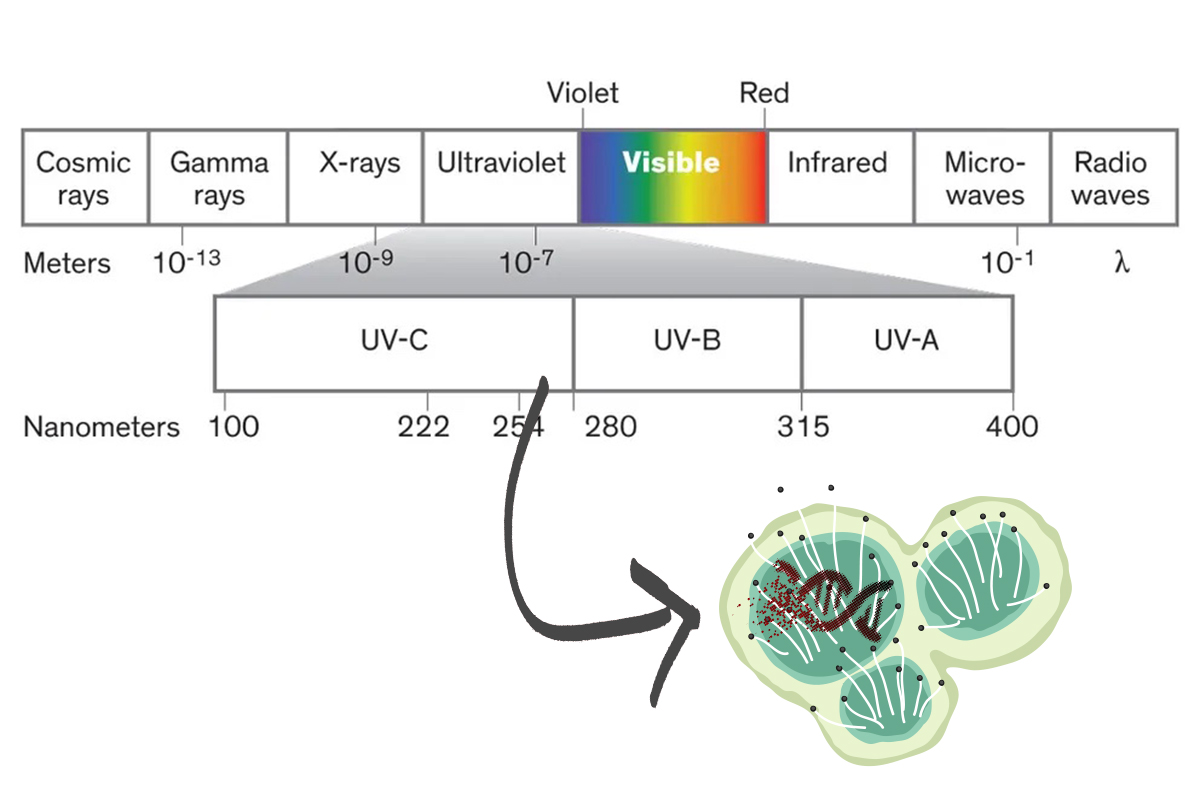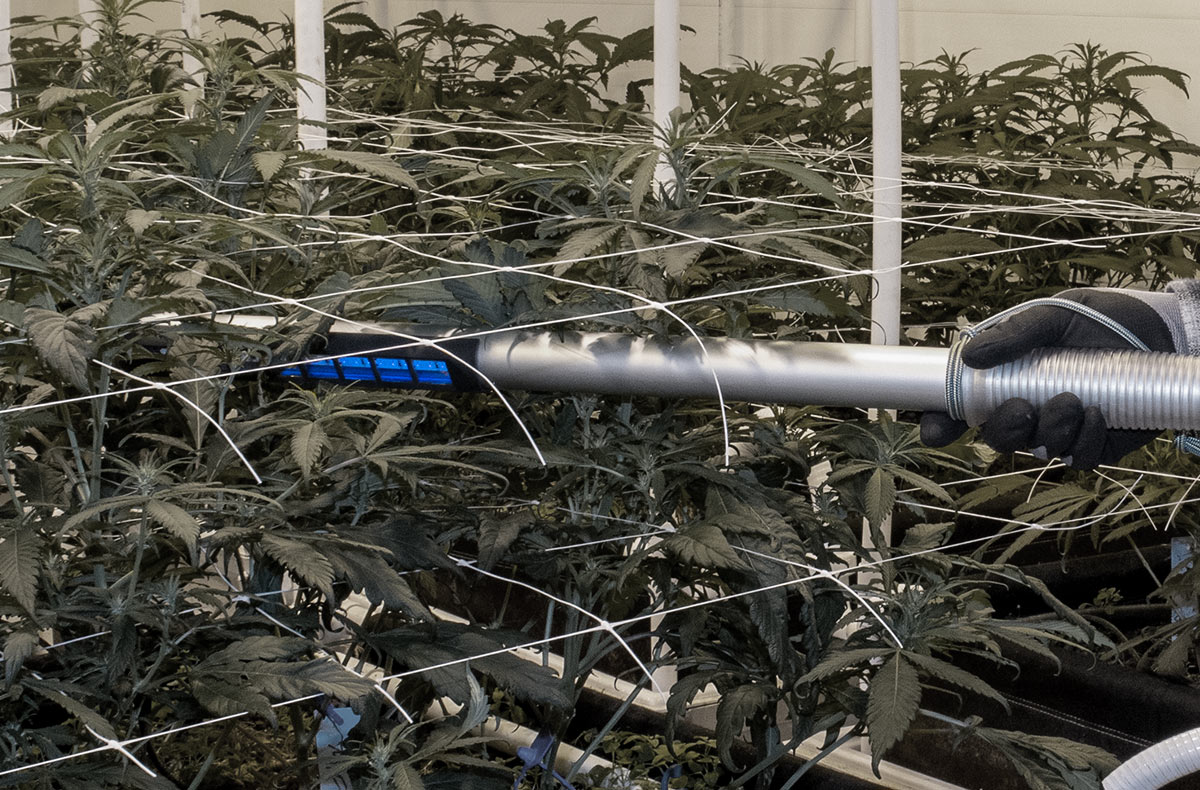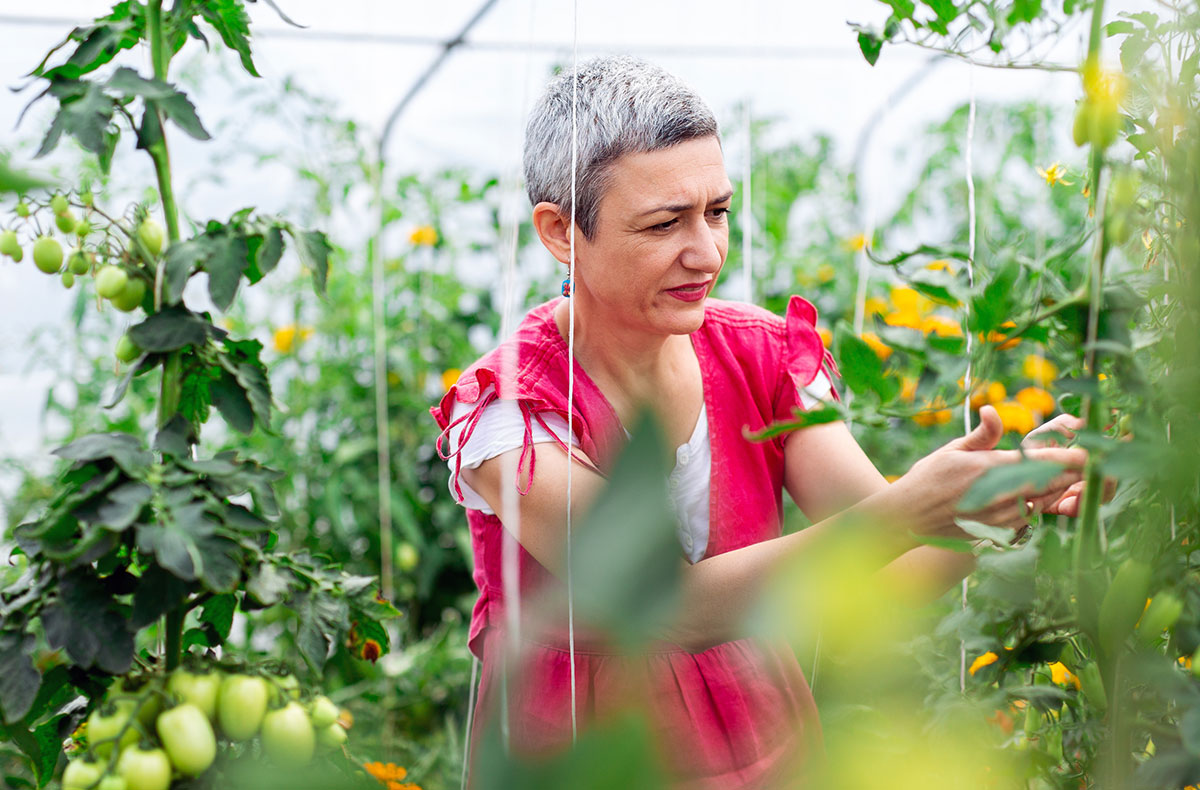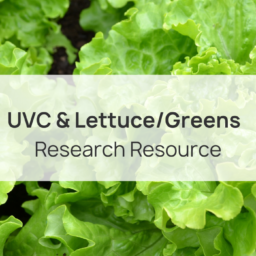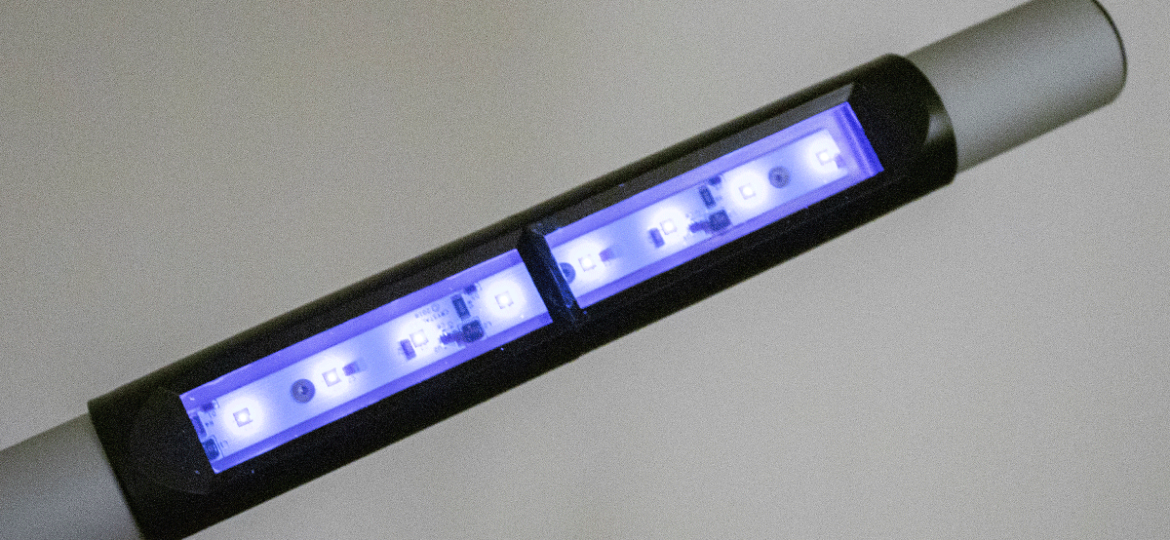
[vc_row][vc_column][vc_column_text]Germicidal UVC as a means to kill microorganisms dates back to the early 1900s. But it was not until the 1990s that it became a common disinfection tool used in places like hospitals, schools and airports. Today we see it everywhere in varying capacities and the exploration of vast application potential. Here are just a few areas that commonly leverage germicidal UVC for disinfection.
There are three common UVC applications seen today:
- Upper-room: These are the systems installed in inhabited spaces, such as above hospital patient beds, waiting rooms, schools, airports, etc.
- HVAC Coil irradiation: This application places UVC light at the coils and drain pans of cooling systems to prevent biological growth.
- Airstream disinfection/irradiation: This places UVC light in air handling units and ducting to inactivate microorganisms as they pass through.
Medical
Historically, the most prominent use of germicidal UVC is in hospital settings. UVC became a chemical free standard for many hospitals in their HVAC systems. UVC systems installed in patient rooms, waiting rooms and corridors are also commonly used. With the arrival of COVID19, a renewed interest in UVC led to additional research and application expansion. Large, high powered portable UVC units are now employed in unoccupied hospital spaces as a means to sanitize rooms and quarantine units in between patients. The renewed research interest prompted by COVID19 also found that germicidal UVC reduces the transmission of common hospital “superbugs” such as resistant Staphylococcus aureus (MRSA), vancomycin-resistant enterococci (VRE), C. difficile and Acinetobacter.
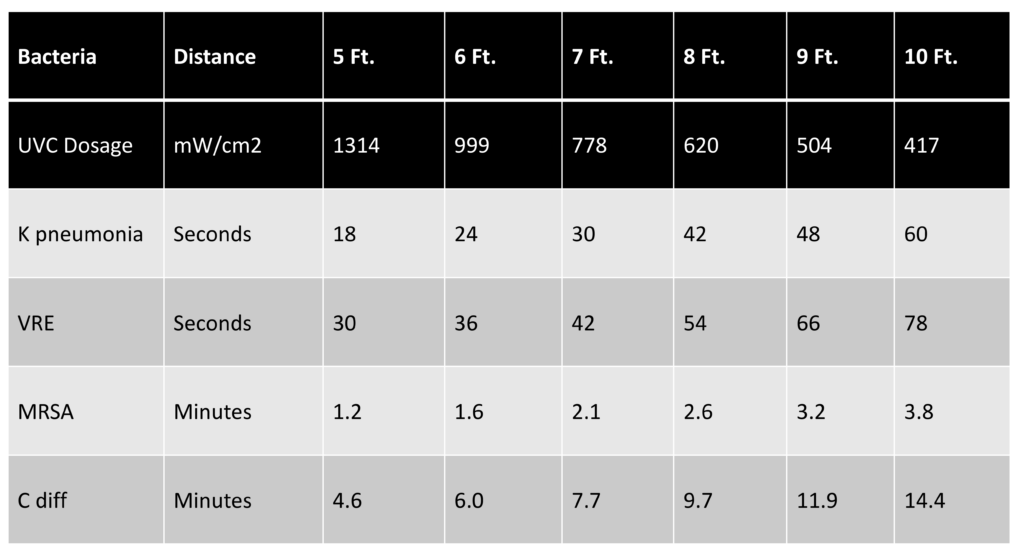
Nearly every medical facility has migrated towards a digital infrastructure for monitoring patients and recording their information. This has created high tech, high touch surfaces which are some of the dirtiest in healthcare. Handheld UVC spot sanitation as well as the exploration of automated UVC devices are helping address this.
Food Processing
Germicidal UVC in food manufacturing has been used for over 50 years. In the last decade, UVC has proven to be an effective, economical and versatile method for enhanced food safety and preservation. Research has found that the use of UVC, especially UVC LEDs, is highly effective against three common food pathogens: Escherichia coli O157:H7, Salmonella enterica, and Listeria monocytogenes. Likewise, it can inactivate various bacteria, viruses, cysts, molds and yeasts. UVC is starting to see application in the treatment of beverages, disinfection of production area surfaces, disinfection of packaging, disinfection of produce, and more.
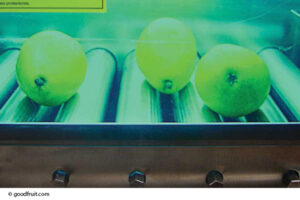
Benefits and Versatility of UVC application in food processing:
- Shelf-life Extension: Shelf-life extension is a promising new benefit of UVC application. By extending shelf life, losses are minimized as well as the risks associated with food poisoning. USDA testing has shown UVC to double the shelf life in produce, especially helpful with lettuce products.
- Operational Advantage: UV LEDs can be manufactured with highly stable output at optimum wavelengths. They operate with low electrical power, have no warm-up time, and are highly effective in cold (e.g. refrigeration) environments. Their efficiency and efficacy makes them a cost-effective, energy saving alternative to UVC lamps and chemical treatments.
- Design Flexibility: UVC LEDs enable vast versatility in apparatus design. UVC LEDs have barely tapped potential for use in designs for a variety of surfaces and liquid applications. Cold storage facilities, transport, and small disinfection apparatuses – where UVC lamps cannot be used – are already utilizing UVC LED applications. UVC LEDs have also made upscaling to industrial disinfection applications (such as conveyor belt irradiation and liquid disinfection) safer and more effective.
Example Decontamination Applications:
- Equipment and tool surfaces in bakeries, cheese plants, meat plants, etc.
- Conveyor surfaces.
- Packaging such as boxes, caps, bottles, cartons, tubes, films, foils, etc.
- Fresh products such as vegetables, fruits, meats, etc.
- Frozen products such as vegetables, fruits, meats, seafood, bakery products, etc.
- Cooked, refrigerated products such as pasta, cheeses, etc.
- Liquid foods and beverages such as juice products, waters, etc.
- Breweries and wineries where designer yeasts can cross-contaminate different beverage products and result in quality and taste issues.
Indoor Agriculture
The global indoor farming market was valued at $112.63 billion in 2019 and projected to reach $131.22 billion by 2025. This rapid growth is fueled by many factors, including land availability, water efficiency and the benefits that come from a controlled environment. While controlled environments offer a range of benefits versus growing outdoors, it is not free of risk. Contamination from bacterial and fungal pathogens can rapidly wipe out an entire crop. Indoor growers must also meet cGMP requirements, HACCP compliance and BRC Global Standards. Likewise, demands for fresh, clean products and longer shelf life are high.
Germicidal UVC offers a strong decontamination partner or alternative to chemical pesticides, fungicides and chemical sanitation practices. At proper frequency and dose, UVC can destroy microorganisms and help maintain a healthy growing environment.
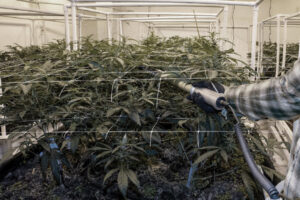
Indoor Agriculture UVC Applications:
- Mold and mildew reduction and elimination. (Researchers have successfully reduced the severity of powdery mildew by 90-99% based on UVC dosage.)
- Defending plants against infection, injury and pests. (UVC exposure at specific distances and times have proven 100% mortality for mite species and greater than 50% reduction in egg hatch-ability.)
- Whole room air disinfection.
- Targeted spot treatment.
- Water disinfection.
Public Spaces
The application options for germicidal UVC light are more prolific in health care, food processing and counter-bioterrorism, but routine adoption and application in the everyday spaces we inhabit remains yet to be fully realized.
Restaurants
It only takes one outbreak to ruin the reputation of a restaurant or force a financially impactful shutdown. UVC, especially UVC LEDs, can be employed in every aspect of the restaurant experience.
- Clean and sanitize surfaces that come in direct contact with food: Contaminated surfaces in food service is one of the most common health violations received by restaurants. UVC has proven to be effective at killing up to 99.9% of the most harmful foodborne pathogens including E.Coli, Salmonella, and Norovirus.
- Mold and mildew in freezers and refrigerators: UVC LEDs can safely and effectively destroy mold and mildew in cold environments while also keeping food safe from harmful chemicals.
- Disinfect ordering and POS devices: Non-food contact equipment is another common violation category in the restaurant industry, especially in the era of high customer handling of these devices.
- Bathroom disinfection: Bathrooms are an environment where bacteria rapidly repopulate and are used by employees handling food as well as customers.
- Air handling and duct systems: Installation of UVC in HVAC systems helps decrease the load of microorganisms, especially in recirculated environments.
- Handheld and mounted UVC units: Mounted UVC units installed throughout restaurant spaces can aid in airborne microorganism reduction. Sterilizing wands provide effective means of cleaning booths, condiments and other items between customers, spot cleaning other surfaces between use and even food sanitation before serving.
Entertainment Venues
Sports arenas, movie theaters and other such entertainment venues saw application of germicidal UVC sanitation in lieu of COVID19, many for the first time. UVC is being employed for surface contamination, sanitation of unoccupied spaces (such as bathrooms and locker rooms) as well as combatting airborne pathogens.
Public Transportation
In some cities, UVC is being leveraged in various forms to help reduce both airborne and surface pathogens. Powerful, mobile UVC is being employed in city buses, subways and subway stations. Application has been employed for high intensity exposure when transportation and stations are emptied of people. Indianapolis has employed UVC irradiation for airborne pathogens in school buses that allows for continuous airstream disinfection through air recirculation systems while students are on the buses. This has allowed them to solve issues with chemical use that speeds up the wear and tear on bus materials and causes corrosion in air conditioning systems, as well as minimize the risk from chemical exposure to their workers and occupants.
Schools
Schools have been installing upper-room germicidal UVC fixtures and integrating it into their HVAC systems, similar to what has long been used in hospitals. High powered, portable UVC units are being used to disinfect classrooms after hours. Handheld UVC units provide quick and easy sanitation for things like keyboards and tables in between student use, helping cut down on respiratory exposure to chemical sanitation while students are present.
Employee Health
Germicidal UVC can help develop healthier and safer workplaces with less bacteria, viruses, parasites, mold/mildew and other such pathogens. Employee exposure to indoor pathogens has been linked to symptoms like headaches, fatigue, trouble concentrating, and eye and respiratory irritation. Ventilation, climate control, remodeling, age of the building and so much more can all play a role in these exposures. UVC can help remediate exposure to airborne pathogens and help reduce the effect chemical sanitation can have on indoor air quality. Similar to schools and hospitals, offices greatly benefit from upper-room and HVAC applications of UVC. With the arrival of COVID19, handheld UVC devices can help minimize chemical cleaning agent exposure by offering quick and effective surface disinfection of high-touch surfaces and rooms in between uses.
Safely Harness Powerful Germicidal UVC for Your Unique Needs
The Element Grow Katana kills 99.99% of viruses and other contaminants within seconds of exposure. It is a battery-powered, LED UVC light wand specifically designed for direct exposure to contamination, making it ideal for hospitals, biomedical, food processing, retail and more. The Katana’s extreme portability and lightweight, ultra slim design provides all day handheld comfort and ease of maneuverability. It can be fully submerged in diluted disinfectant solutions, for efficient and complete sanitization of the entire unit. Harness optimum disinfection power and a faster rate of disinfection in a durable package 47% lighter than other industrial handheld units.
Sources
https://www.dukehealth.org/blog/uv-light-helps-duke-hospitals-fight-transmission-of-superbugs
https://hospitalnews.com/ultraviolet-hvac-keys-reducing-hospital-acquired-infections/
https://www.tandfonline.com/doi/full/10.1080/23744731.2017.1402662?scroll=top&needAccess=true
http://www.uvresources.com/blog/proving-uv-c-maintains-air-conditioning-operational-efficiency/
Green, A, et al. 2018. “Inactivation of Escherichia coli, Listeria, and Salmonella by Single and Multiple Wavelength Ultraviolet Light-Emitting Diodes.” Innovative Food Science & Emerging Technologies 47:353–361.
Allende, A, et al. 2006. “Effectiveness of Two-Sided UV-C Treatments in Inhibiting Natural Microflora and Extending the Shelf-Life of Minimally Processed ‘Red Oak Leaf’ Lettuce. Food Microbiol 23(3):241–249.
https://www.grandviewresearch.com/industry-analysis/indoor-farming-market
https://www.mordorintelligence.com/industry-reports/indoor-farming-market
https://www.ncbi.nlm.nih.gov/pmc/articles/PMC3609379/
https://www.prnewswire.com/news-releases/new-retrofit-on-school-buses-with-uv-c-makes-buses-99-9-pathogen-free-301194358.html[/vc_column_text][/vc_column][/vc_row]


